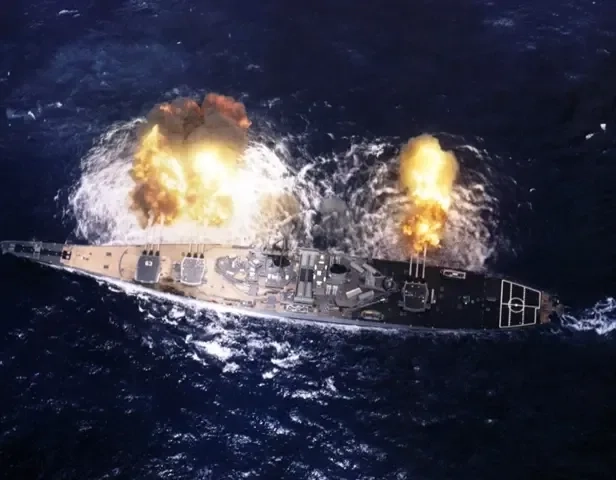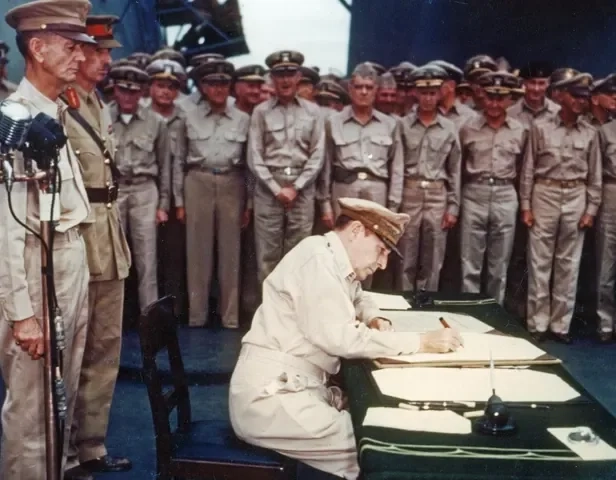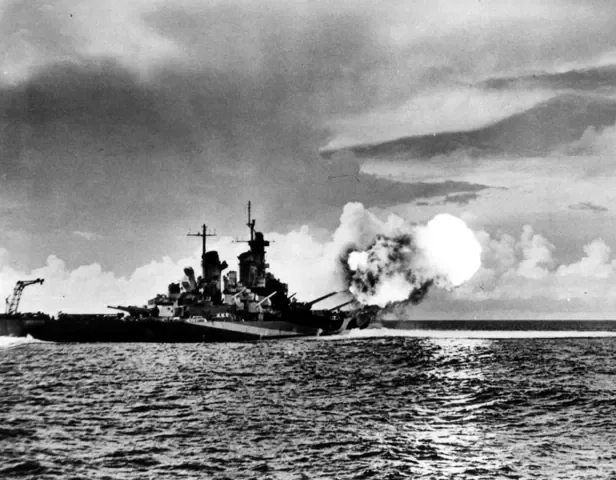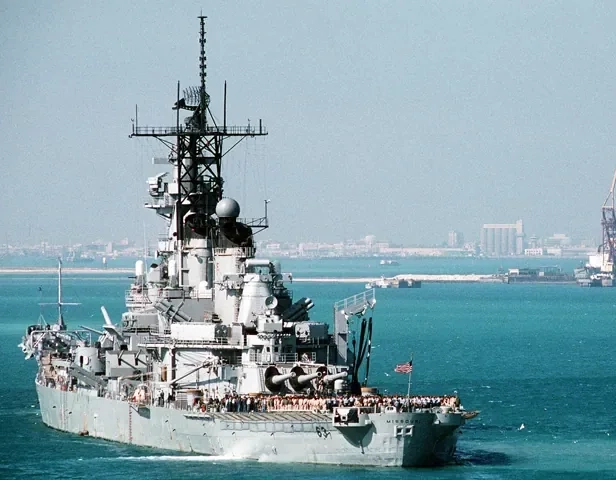
The Forgotten War (1950-1953)
Start of the Korean War
On 25 June 1950 the North Koreans crossed the 38th parallel set in place after WWII and invaded South Korea en masse, beginning what would eventually be known as the Korean War. Due to the declaration by the UN and the close involvement of the US and Soviet in the government of both Koreas, this foreign conflict quickly embroiled multiple countries. Thus, when the North Koreans crossed the parallel to South Korea, the UN--and with that, the US--entered into the conflict as well.
USS Missouri Enters The Conflict
When North Korea invaded South Korea, the Navy’s only active battleship was on a midshipman cruise, a hands-on at-sea summer training course for young officers. Missouri’s midshipman crew completed their cruise and returned to Norfolk, VA to offload midshipman and stock up on ammunition, supplies, and crew. On 19 August 1950, USS Missouri departed for the Pacific and for war.
To prepare for war, USS Missouri underwent a minor facelift at Pearl Harbor shipyard. Some of her guns had been removed in the interwar years, so the Pearl Harbor shipyard replaced fourteen Oerlikon 20mm cannon mounts, added four Bofors 40mm gun mounts to empty gun tubs, and replaced one 40mm gun mount that had been damaged by a hurricane en route.
Her first day at war on 15 September, Missouri fired 52 16” projectiles, damaging two railroad bridges near Samchok with the aid of her helicopter spotters. The following days would be spent in much the same capacity by conducting shore bombardments along the coast, this time at Pohang, before returning to Japan for supplies.
The Battle of Inchon
Although she arrived at Inchon on 19 September, hurricanes and poor weather meant that Missouri arrived too late to support the Inchon landings that would lead to the recapture of Seoul, but was able to fire shore bombardments that targeted enemy combatants on the road from Suwon to Seoul.
In October, USS Missouri became a flagship for Vice Admiral Arthur D. Struble and Seventh Fleet. On 12 October, she bombed the Mitsubishi Iron Works, reportedly firing 96 rounds from her main battery in under an hour. On 13 October, she bombarded Tanchon. On 26 October, she supported the amphibious landing of Wonsan. The next day on 27 October, Bob Hope and Marilyn Maxwell celebrated Navy Day on board. Hope performed three times that day: once for the enlisted, once for the commissioned, and again for those who had missed the original performances.
The Battle of Chosin Reservoir
UN forces had pushed North Korean forces back into North Korea beyond the 38th parallel, prompting intervention from Communist China & the Soviet Union in late October, which in turn drove UN forces south again. Battleship Missouri was at Hungnam where Marines were retreating from Chosin Reservoir in December, providing curtain fire for the evacuating Marines. To do so, she sailed with Task Group 90.8 under the leadership of Rear Admiral Roscoe Hillenkoetter, one of Missouri’s former commanding officers.
From December 1950 to March 1951, the battleship continued to conduct shore bombardments of Korea’s eastern coast and provided cover for aircraft carriers in Task Force 77. During that time, she bombarded Kosong, Kangnung, Tanchon, Songjin. On 3 February, her crew hosted South Korean President Syngman Rhee. On 2 March, Captain George C. Wright relieved Captain Irving T. Duke as commanding officer of the battleship. By the end of the month, USS Missouri was en route to Hawaii and the West Coast of America. Her first deployment in Korea had come to an end.
First Deployment Stats (September 1950 - March 1951)
| Ammunition Type | Number of Rounds Fired |
|---|---|
| 16-inch/50 Cal. Rounds | 2,895 rounds |
| 5-inch/38 Cal. Rounds | 8,043 rounds |
The Second Deployment
Battleship Missouri would not see war again until September 1952. By that point, all four completed Iowa-class battleships were brought back to the active fleet and had rotating deployments in Korea. Prior to her second deployment, the battleship underwent more work in the yard. On 4 September, Captain Warner Edsall became commanding officer of USS Missouri, relieving Captain Sylvester. After that, Missouri headed back to Korea.
This time, USS Missouri would be the flagship for Seventh Fleet Admiral Joseph J. Clark. As with her first deployment, Missouri steamed again with Task Force 77 and conducted shore bombardments. Wonsan, Tanchon, Chongjin, Songjin, Chaho, Hamhung, Hungnam, Taedoli, and Kojo were among some of the cities that came under fire. On 20 November, the crew manned the rails again to welcome President Syngman Rhee on board.
This pattern of providing cover for aircraft carriers and shore bombardments continued into 1953. On 5 March, this pattern was disrupted when a North Korean shore battery opened fire. This would be the first time the battleship had come under enemy fire during the Korean War. The ship came under fire again on 10 March. USS Missouri responded with 998 rounds fired that day from her 5-inch, the most prolific day for her 5-inch guns. On 25 March, the battleship bombarded targets near Kojo, firing 102 16-inch rounds and 61 5-inch rounds. This would be her final gunfire mission of the war.
In July 1953, armistice was signed in Panmunjom, Korea. A line of demarcation kept North and South Korea divided.
Second Deployment Stats (September 1952 - March 1953)
| Ammunition Type | Number of Rounds Fired |
|---|---|
| 16-Inch/50 Cal. Guns | 3,861 |
| 5-Inch/38 Cal. Guns | 4,379 |




